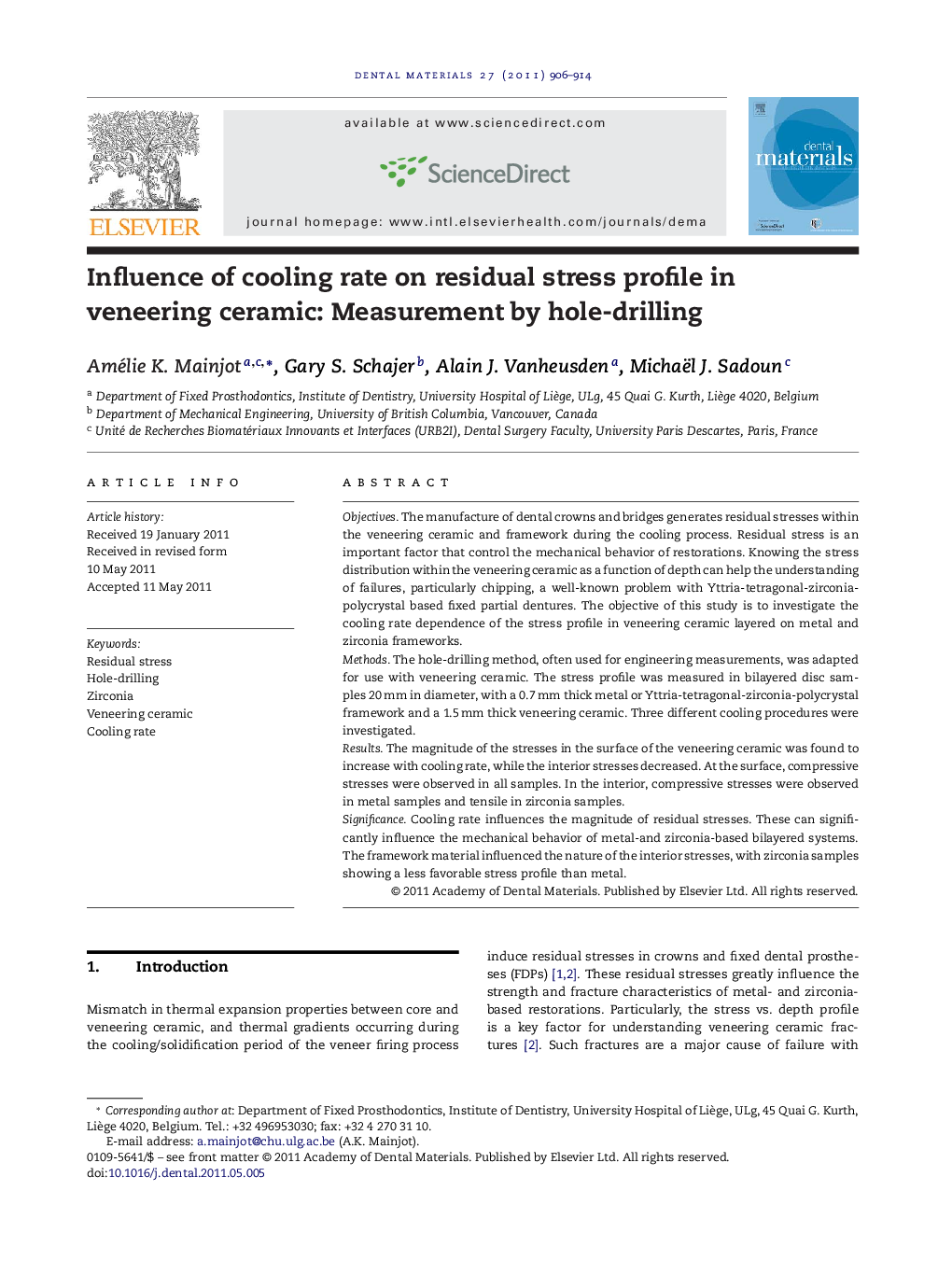| کد مقاله | کد نشریه | سال انتشار | مقاله انگلیسی | نسخه تمام متن |
|---|---|---|---|---|
| 1422358 | 986444 | 2011 | 9 صفحه PDF | دانلود رایگان |

ObjectivesThe manufacture of dental crowns and bridges generates residual stresses within the veneering ceramic and framework during the cooling process. Residual stress is an important factor that control the mechanical behavior of restorations. Knowing the stress distribution within the veneering ceramic as a function of depth can help the understanding of failures, particularly chipping, a well-known problem with Yttria-tetragonal-zirconia-polycrystal based fixed partial dentures. The objective of this study is to investigate the cooling rate dependence of the stress profile in veneering ceramic layered on metal and zirconia frameworks.MethodsThe hole-drilling method, often used for engineering measurements, was adapted for use with veneering ceramic. The stress profile was measured in bilayered disc samples 20 mm in diameter, with a 0.7 mm thick metal or Yttria-tetragonal-zirconia-polycrystal framework and a 1.5 mm thick veneering ceramic. Three different cooling procedures were investigated.ResultsThe magnitude of the stresses in the surface of the veneering ceramic was found to increase with cooling rate, while the interior stresses decreased. At the surface, compressive stresses were observed in all samples. In the interior, compressive stresses were observed in metal samples and tensile in zirconia samples.SignificanceCooling rate influences the magnitude of residual stresses. These can significantly influence the mechanical behavior of metal-and zirconia-based bilayered systems. The framework material influenced the nature of the interior stresses, with zirconia samples showing a less favorable stress profile than metal.
Journal: Dental Materials - Volume 27, Issue 9, September 2011, Pages 906–914